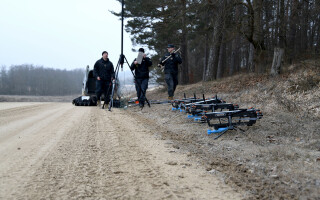Will COTS suppliers find profits in commercial UAV applications?
StoryJuly 20, 2016
Suppliers of commercial off-the-shelf (COTS) hardware and software have had much success in the military unmanned aerial vehicle (UAV) market, especially in the areas of sensor payloads and signal-processing designs, where they excel. UAVs continue to be a profitable arena for these vendors, but as unmanned aircraft technology spreads to commercial markets such as agriculture, construction, retail delivery, disaster relief, and the like, will they find similar success in these nondefense applications, all of which promise to dwarf the value of the military UAV market?
On paper, COTS companies would appear to have the upper hand when it comes to supplying embedded electronics for payloads, as well as hardware and software in avionics systems. If nothing else, they’ve been doing it longer than anyone else and have a proven pedigree.
However, COTS suppliers will have to adjust to each commercial industry’s various standards and form factors – and make that investment on their own dime. While self-funding is nothing new to COTS vendors, especially with Department of Defense budget cuts the last few years, it will likely be viewed as risky by some in management.
COTS suppliers I talked to in our McHale Report roundtable after the Xponential show this Spring in New Orleans – formerly known as the Unmanned Systems show – had mixed emotions when it came to potential commercial UAV opportunities.
“I am not sure anyone can project the level of success for military and commercial suppliers at this time,” said Chip Downing, senior director business development, Aerospace and Defense, Wind River Systems. “What we do know is that suppliers of unmanned systems are experiencing a virtuous cycle of growth and innovation – both commercial and military systems are benefiting from rapid market growth based upon innovation of IoT [Internet of Things] and business-intelligence solutions. This growth is based upon open standards and COTS platforms, allowing the innovation to focus on the high-value IoT intelligence gathering and analysis, not the individual building blocks of the UAV or IoT solution stack. COTS platforms enable the fastest integration of the latest advancements in technology, while paving the way for rapid insertion of future innovation.”
Some see it as a given that as commercial markets begin to figure out how they can leverage unmanned aircraft, they will need to rely on experienced military suppliers.
“There will undoubtedly be larger suppliers with military unmanned experience that enter into the commercial space,” said Mark Littlefield, head vertical product manager, Defense, Kontron. “Certain commercial applications willneed the full support of help with certifications, long-term product availability, design stability/scalability, safety standards adherence, small-form-factor features, I/O and multicore integration, ruggedization, and thermal management, which means they need to engage with experienced COTS suppliers.”
Mike Southworth, product marketing executive, Curtiss-Wright Defense Solutions, says his company “is already seeing more and more interest from nonmilitary unmanned-vehicle platform customers for our small-form-factor processors and Ethernet networking technologies. We have high expectations that these programs will yield a healthy market for defense COTS companies like Curtiss-Wright. On the other hand, the miniature consumer-drone space will almost assuredly continue to be dominated by offshore manufacturers.”
Even if they do find success in non-defense markets, COTS suppliers will often find it limited to applications that have requirements similar to military programs.
“COTS companies will still do OK, but the opportunities will be limited to applications that are used in industrial applications, police, fire, disaster recovery, etc.,” said Scott Unzen, market development, Omnetics Connector Corp. “There will be a large development in consumer markets that will not use defense COTS companies because they will be driven by price and not by high-reliability components.”
Unzen is right: At the end of the day the commercial applications will not want to pay defense prices for their systems, especially as the cost of the platforms come down when they are mass-produced for commercial markets. Many UAV producers do not have the manufacturing capability in place to produce components at the commercial-level volumes to enable the price reductions necessary for play in commercial arenas. Defense COTS companies would be taking a big risk, one they might not be able to back up.
The next few years will be telling, as civilian aviation authorities continue to evolve their rules to accommodate unmanned aircraft in the civilian airspace and as UAV developers design more sophisticated sense-and-avoid technology so the aircraft can operate more safely in civilian airspace alongside passenger aircraft.
“Over the last ten years, we have seen many airframes come to market and be successful – the next ten years will define how we use these airborne platforms in our personal and business lives,” Downing noted.
For more on our roundtable, visit http://bit.ly/29LquCh.





